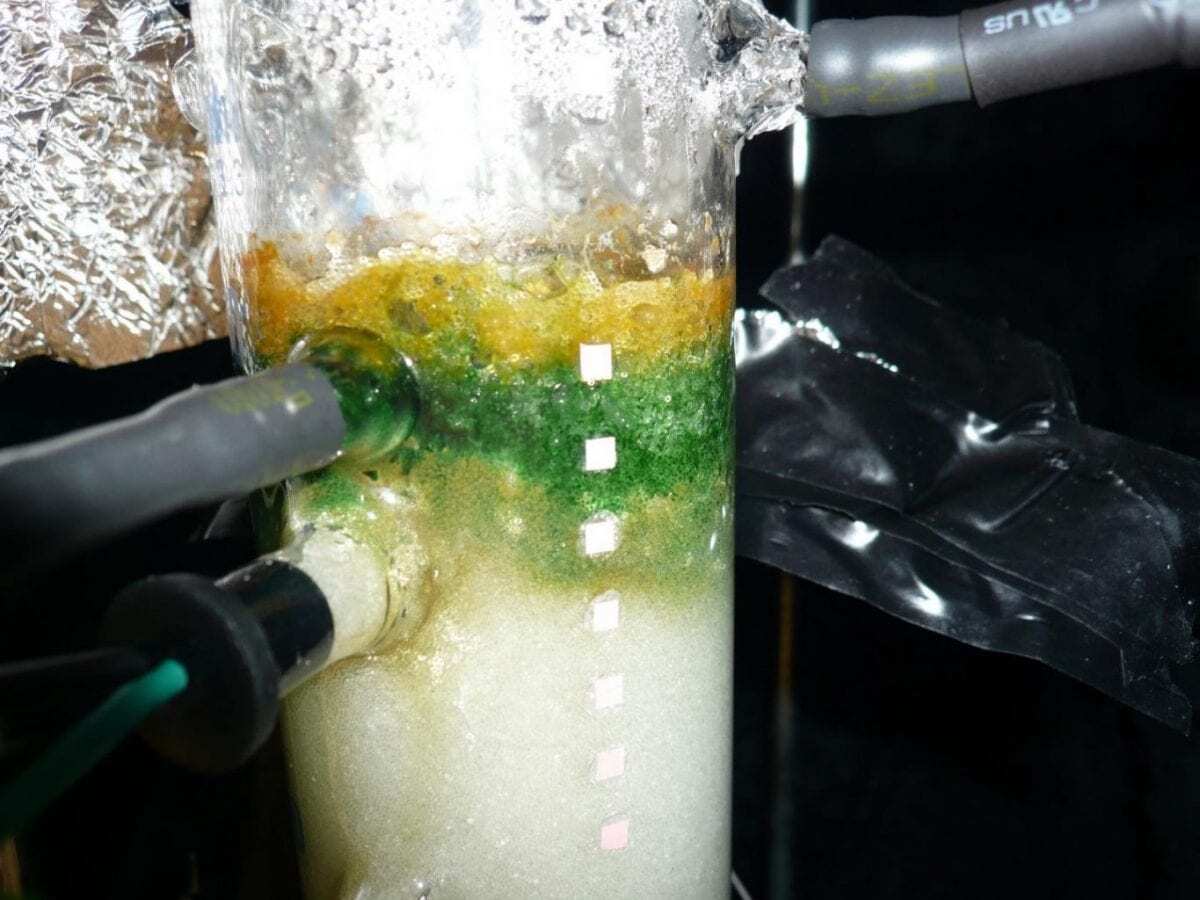A new experiment by Iowa State University’s Elizabeth Swanner that evaluates the reduction of iron in prehistoric oceans may reinterpret the conditions under which iron-rich sedimentary rock is formed.
Swanner, an assistant professor of geological and atmospheric sciences, was part of an international research team including researchers from the University of Tuebingen in Germany and the Chinese Academy of Sciences in Beijing. The team modeled the prehistoric ocean, similar to that of the Archean Era 2.5 billion years ago within a graduated cylinder.
“We really only wanted to simulate it in the vertical dimension, so we used a graduated cylinder and modified it,” Swanner said.
In a previous experiment, the researchers had modified the cylinder to simulate an Archean ocean with large amounts of iron and no oxygen except for what was made by cyanobacteria. Ports along the cylinder’s side allowed for sampling at various levels.
“We were studying cyanobacteria because these are the organisms which we think put all of the oxygen in the atmosphere originally,” she said.
The research, recently published by Scientific Reports, showed that despite the oxygenation by the cyanobacteria, much of the iron did not remain oxidized but was reduced again into its dissolved form.
This unexpected result may be explained by an enzyme on cyanobacteria which reduces iron. In the modern ocean, which contains at least 1,000 times less iron, cyanobacteria reduce a small amount of iron, but the experiment showed a larger amount of iron reduction than the researchers anticipated. Another possible explanation is that the iron is reduced by a photochemical reaction occurring when the iron is hit by light.
The implications of this finding could change the conditions under which iron-rich sedimentary rocks are thought to be formed from the ancient oceans.
“Traditionally if you see iron enriched in sediments from the ocean you tend to think it was deposited under anoxic conditions,” Swanner said. “But potentially we have a way to still deposit a lot of iron but have it be deposited under fully oxygenated conditions.”
The initial results in the laboratory prompt new questions for Swanner, including whether she will find evidence of this process in the Midwestern lakes that her research group is now studying. These lakes have iron at the bottom and oxygen only in the top of the water column, and also contain cyanobacteria.
Header Image: This is a graduated cylinder model of the ocean. The green shows cyanobacteria and the brown shows the oxidized iron. CREDIT Iowa State University’s College of Liberal Arts and Sciences







